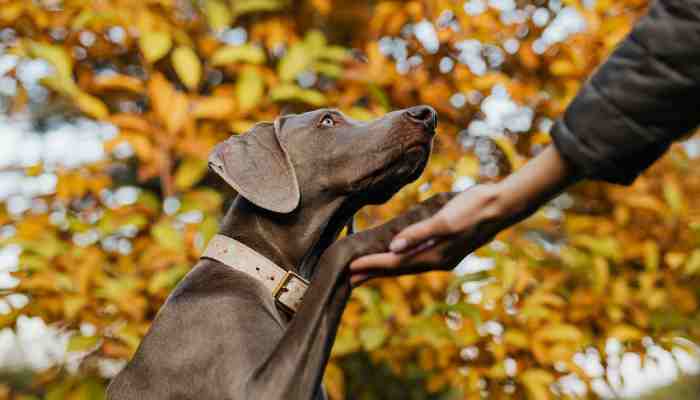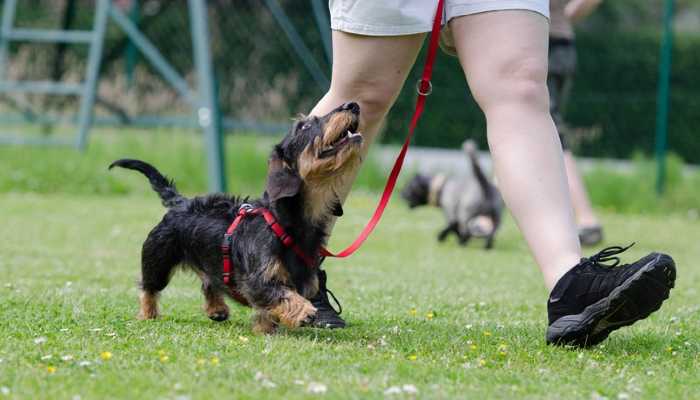Every new pet parent should be aware of the importance of crate training when it comes to dog ownership. The goal of crate training is to make your dog feel safe, secure, and well-behaved inside of a crate, which can be used for a variety of activities. The advantages of crate training are numerous. Dogs are naturally reluctant to eliminate in their own living environment, therefore crate training can be a useful strategy for your house. Particularly if you have a young puppy who would misbehave if left alone, a crate can provide a safe and secure space for your dog to rest and unwind.
A trained dog that feels secure in its crate is more likely to behave calmly and politely when left alone or in strange environments. This can be especially beneficial for dogs who experience separation anxiety or who are inclined to act destructively when left alone. Crate training can also be a significant element of transportation. A crate may give your dog a safe and secure place to stay during the trip, whether you’re flying or driving. So as you can see, crate training is an important and beneficial aspect of dog ownership. It takes time and patience, but with a little effort and consistency, you can teach your dog to be a well-behaved and well-adjusted member of the family.
Common misconceptions
Is crate training cruel? Not at all, when done correctly, it’s a good and helpful experience for dogs. They feel protected inside, it stops disruptive behaviour, and keeping them safe when travelling. The crates should never be used as a punishment, they should be a positive and safe heaven for your dog.
About the challenges
– Your dog should be properly introduced to the crate by being accustomed to it gradually. Feed them first in close proximity to the crate, then gradually move their food inside. To get them to enter the crate on their own, you may also put toys and goodies inside.
– Dogs should not be left in the crate for long periods of time, especially not while you are away from home. A general rule of thumb is that dogs should not be left in the crate for more than a few hours at a time.
– It’s important to make sure your dog has plenty of opportunities for mental and physical stimulation while they are in the crate. You can put toys, puzzles, and interactive games there. It’s also important to make sure your dog gets enough exercise and playtime outside of the crate.
– The crate should not be used as a replacement for training. Your dog should have clear rules and boundaries, and you should continually reward excellent behaviour. Although crate training can be a helpful tool in the training process, it shouldn’t be the only method used.
choosing the crate
When selecting a crate for your dog, it’s important to choose the appropriate size to ensure your pup is comfortable and has enough room to move around. It should be large enough for your dog to stand up, turn around, and lie down comfortably. If you are purchasing a crate for a puppy, choose a size that will accommodate your puppy when it reaches its adult size. It’s important to remember that the crate should not be too small, as this can cause discomfort and anxiety for your dog. On the other hand, a crate that is too large can make it difficult for your dog to feel secure and may make it harder to potty train them.
Proper introduction
The crate should be a positive and comfortable space for the dog, and it’s important to properly introduce it to your pup by gradually getting them accustomed to it. This can be done by feeding them meals near the crate and gradually moving their food inside the crate, as well as placing toys and treats inside the crate to encourage them to enter it on their own.
Associate specific words
Choose a word that is easy for you to remember and for your dog to understand. Some common options include “go out,” “come”, or “outside,” Consistently use the same word every time you want your dog come out of the crate. This will help your pup to understand the association between the word and the act of leaving the crate. Always use the word in a happy and positive tone of voice, this will help to create a positive association in your dog’s mind. Be patient and consistent in your use of the signal, eventually your dog will learn it.
In conclusion, when done correctly, crate training is a beneficial and efficient method for potty training, stopping destructive behaviour, and keeping dogs safe when travelling as it gives them a sense of security. However, it’s crucial to appropriately introduce your dog to the crate, refrain from using it as a form of punishment, and avoid locking your dog inside for extended periods of time. Additionally, it’s critical to set up clear rules and boundaries for your dog and to provide them lots of mental and physical stimulation when they are in the crate. Crate training can be a successful and advantageous experience for both of you with the right instruction and continuous reinforcement.




